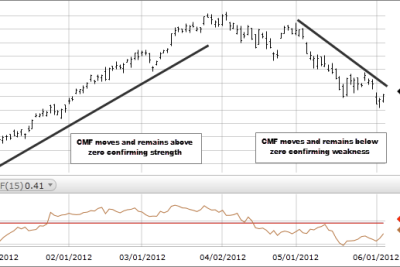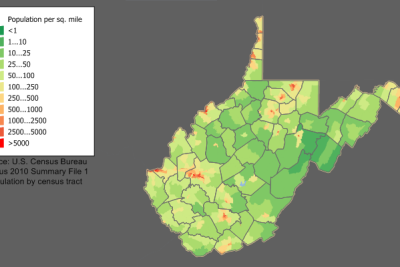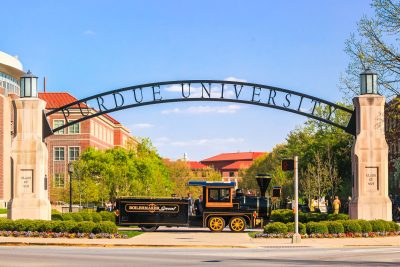
Biography and Poems of Don Juan: Facts About His Daughter

Lord Byron, a figure shrouded in both controversy and admiration, has left an indelible mark on the landscape of English literature. Through his most notable work, "Don Juan", Byron not only critiques societal norms but also explores the depths of human emotion and behavior. The life of Byron, filled with tumultuous affairs and monumental achievements, paints a complex portrait of an artist who was both revered and scorned in equal measure. His poetry remains a testament to the ideal image st pete of the Romantic era, bringing forth a voice that resonates with disillusionment and passion.
The exploration of Byron’s work, particularly the sprawling narrative poem "Don Juan," reveals his innovative approach to storytelling within poetry. As readers dive deeper into his verses, they discover themes of love, betrayal, and the paradox of human nature. Sectioning off our focus, this article covers not only the life of Byron and the significance of his poetry but also the personal details surrounding his daughter, Ada Lovelace. By understanding facts about his daughter, we begin to see how the legacy of Byron extends beyond his own life and into the realms of future generations.
Overview of Don Juan
"Don Juan" is an epic poem authored by Lord Byron, structured in a series of cantos that reflect the poet's unique blend of satire and romanticism. Unlike traditional portrayals of the infamous character, Byron presents Don Juan not as a seducer but rather as a victim of the affections bestowed upon him by women. This inversion of the typical narrative challenges the reader’s preconceived notions about love and morality, propelling Byron's exploration into societal norms and personal identity.
Analyzing the Structure
The poem spans multiple volumes and is known for its conversational tone and biting humor. Byron uses a mixture of heroic couplets and varied stanza lengths, reflecting the multifaceted nature of his storytelling. As we delve into the structure of "Don Juan," we see how the shifting forms mirror the chaotic life of the protagonist and invite readers to engage actively with the text.
Characterization of Don Juan
Byron's portrayal of Don Juan is a critique of the archetypal womanizer. Instead, he depicts Juan as a beautiful youth swept up by the overwhelming affections of women, often creating chaos in his wake. Each canto reveals how society's expectations shape and distort personal interactions and highlight the inevitable conflicts that arise in matters of love and passion. The underlying message serves as a commentary on the nature of desire and its consequences, further emphasizing Byron's role as a daring innovator in literature.
Lord Byron's Life and Influence
George Gordon Byron, known simply as Lord Byron, was born in London on January 22, 1788. His aristocratic background offered him a taste of privilege, yet he was often seen as an outsider due to his physical deformity, a clubfoot. This perceived weakness fueled his exploration of identity, beauty, and societal expectations throughout his works. As he traveled across Europe and engaged in various political causes, such as the Greek War of Independence, Byron became a figure of romantic heroism, inspiring countless artists and writers.
Romantic Relationships and Scandal
Byron’s life was rife with scandalous relationships that captivated the public imagination. His affairs with prominent women, including the poetess Lady Caroline Lamb and his half-sister, Augusta Leigh, exhibited his turbulent emotional landscape. Each liaison provided material for his poetry and solidified his reputation as a quintessential romantic figure, often flouting societal norms whilst wrestling with his internal conflicts.
Political Engagement and Legacy
Beyond his literary legacy, Byron's involvement in the fight for Greek independence further cemented his status as a hero among those who sought liberation from tyranny. He used his fame, influence, and wealth to support the cause, ultimately succumbing to illness in Greece in 1824. Byron's passion for justice and the arts intertwined throughout his life, showcasing the ideal image of a Romantic poet who engages deeply with the world around him.
The Significance of "Don Juan"
"Don Juan" is more than just a poem; it is a reflection of Byron’s life and times. The sheer ambition of the work allows for exploration of a myriad of themes, making it a pivotal text in the canon of English literature. Byron's ability to shift from comedy to tragedy within the same stanza embodies the contradictions of human nature and serves as a platform for social critique.
Satirical Elements
Byron's satire is a critical focal point in "Don Juan." With sharp wit and humor, he addresses contemporary societal issues such as hypocrisy in relationships and the general state of morality among the upper classes. These pointed observations invite readers to question the ideals they hold, fostering a dialogue that is as relevant today as it was during Byron's time.
Exploration of Themes
- Love and Gender Dynamics: Byron's characters navigate a world rife with shifting affections and power dynamics, making their journey a complex landscape of romance.
- Morality and Hypocrisy: The poem shines a light on the often contradictory nature of societal morals, challenging readers to consider the implications of these double standards.
- National Identity: Byron's experiences in various cultures influence his writing, contributing to themes of freedom and personal liberation in the broader context of European politics.
Themes Explored in Byron's Poetry
Byron’s poetry is characterized by its deep exploration of themes related to identity, love, and the human condition. His ability to weave personal experiences into universal themes demonstrates the enduring relevance of his work. In "Don Juan," Byron presents a rich tapestry that explores the contradictions inherent in love and relationships, which resonate with readers across generations.
The Complexity of Love
Byron illustrates how love can be both nurturing and destructive. His characters often experience intense relationships that highlight their vulnerabilities and desires. The complexity of love within "Don Juan" is reflected through the various interactions Juan has with the diverse women he encounters. Each relationship sheds light on different facets of human desire, allowing readers to empathize with the emotional struggles intertwined with affection.
Humanism and Philosophy
Byron's works also reveal a profound humanism, anchored in the belief that human experiences are essential to understanding life’s truths. Through "Don Juan," he navigates philosophical inquiries related to fate, free will, and moral ambiguity. This philosophical underpinning elevates Byron’s poetry, as readers are compelled to ponder their own beliefs about existence in light of his incisive commentary.
Facts About Byron's Daughter
Amidst the tumult of Lord Byron's life and literary pursuits, he fathered a daughter named Ada Lovelace, who would become a figure of historical significance in her own right. Born on December 10, 1815, Ada was the only legitimate child of Byron and his wife, Anne Isabella Milbanke. Despite the separation between Byron and his family, Ada grew to be an outstanding mathematician and writer.
Ada Lovelace's Accomplishments
Ada is best remembered for her pioneering work in computing. Often regarded as the first computer programmer, she collaborated with Charles Babbage on his proposed mechanical general-purpose computer, the Analytical Engine. Her notes on the engine encapsulated a vision of computing that foresaw the capability of machines to go beyond mere calculations, establishing her legacy as a visionary thinker.
The Impact of Byron's Legacy on Ada
Although Lord Byron was not actively present in Ada's life, his influence is palpable in her pursuits. She inherited her father's passion for arts and sciences, immersing herself in the study of mathematics and logic. This blend of creativity and rationality would shape her contributions to early computing and mathematics. The ideal image st pete reflects Ada's unique blend of heritage, showcasing the intertwining destinies of father and daughter.
Byron's Legacy and Literary Impact
Lord Byron's impact on literature extends far beyond his own lifetime. His ability to challenge conventions and explore themes of love, death, and identity has paved the way for future generations of writers. Poets from the Victorian era and beyond have drawn upon Byron’s innovations, paving the way for the emergence of modern poetry.
Influence on Subsequent Poets
Many poets have cited Byron as a foundational influence on their work. His blend of personal reflection with broader societal commentary has inspired a multitude of literary voices. Byron's unabashed embrace of emotion and existential inquiry resonates through the works of poets such as John Keats and Percy Bysshe Shelley, each of whom has contributed to the evolution of the Romantic movement.
Cultural and Political Impact
Beyond literature, Byron's involvement in political issues, particularly his staunch support of Greek independence, instilled a sense of heroism that transcended the arts. His life serves as an enduring reminder of the connection between art and social responsibility, making him a cultural icon whose influence is still felt in various fields today.
Conclusion
Lord Byron's multifaceted legacy encompasses not only the poignant verses of his poetry but also the profound influence he had on his contemporaries and future generations. Through works like "Don Juan", he delves into the complexities of human emotion, challenging readers to reconcile their own ideas about love, morality, and identity. As we reflect on the facts about his daughter, Ada Lovelace, we recognize that Byron's contributions extend far beyond the realm of poetry into the annals of history, enriching the intellectual landscape of our world. His spirit of rebellion, artistic innovation, and passionate engagement with life continues to inspire those who seek to contribute meaningfully in both literature and beyond. The image of Byron, much like the ideal image st pete, encapsulates a profound legacy that endures through the ages.
Did you find this article helpful? Biography and Poems of Don Juan: Facts About His Daughter See more here Education.
Leave a Reply






Related posts